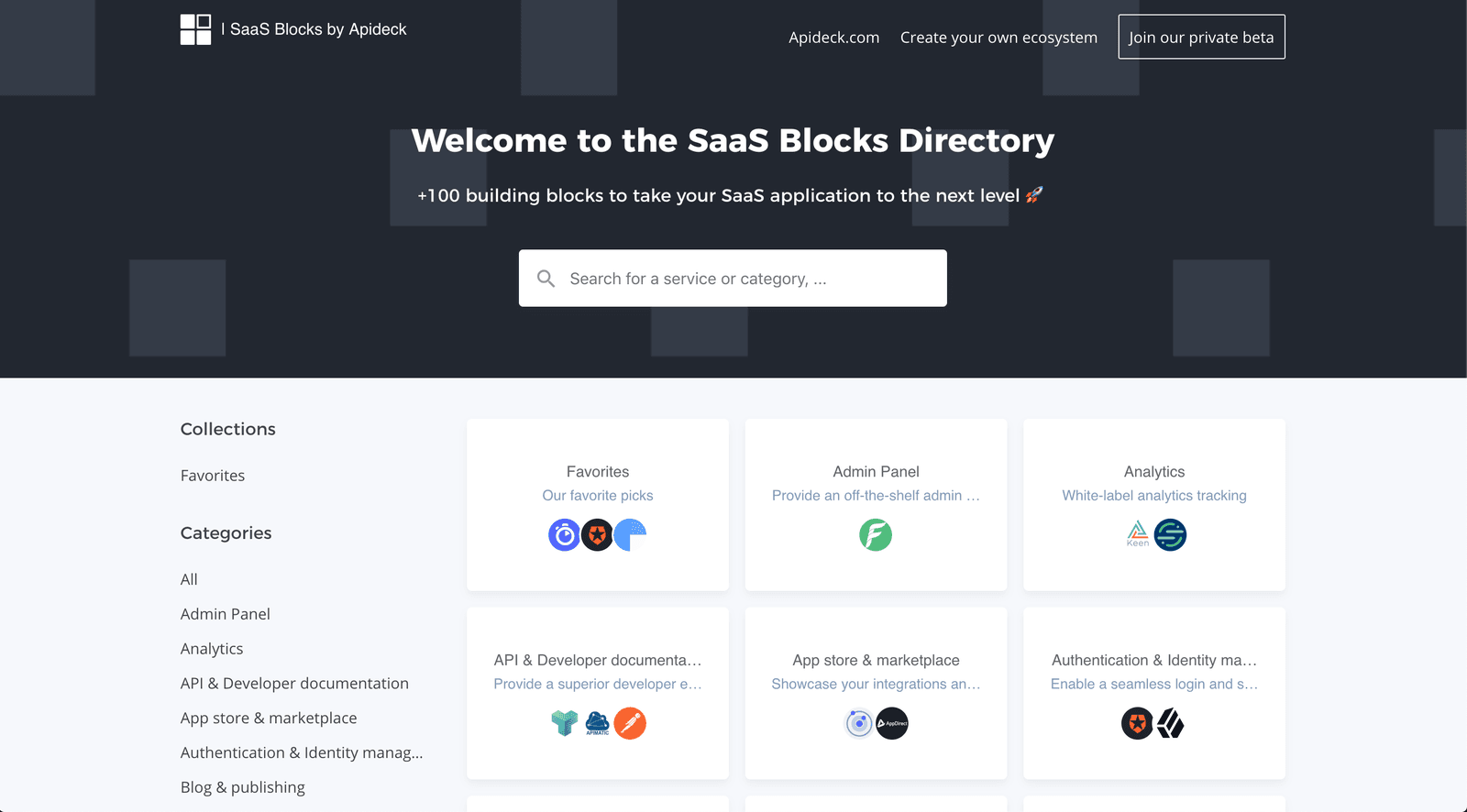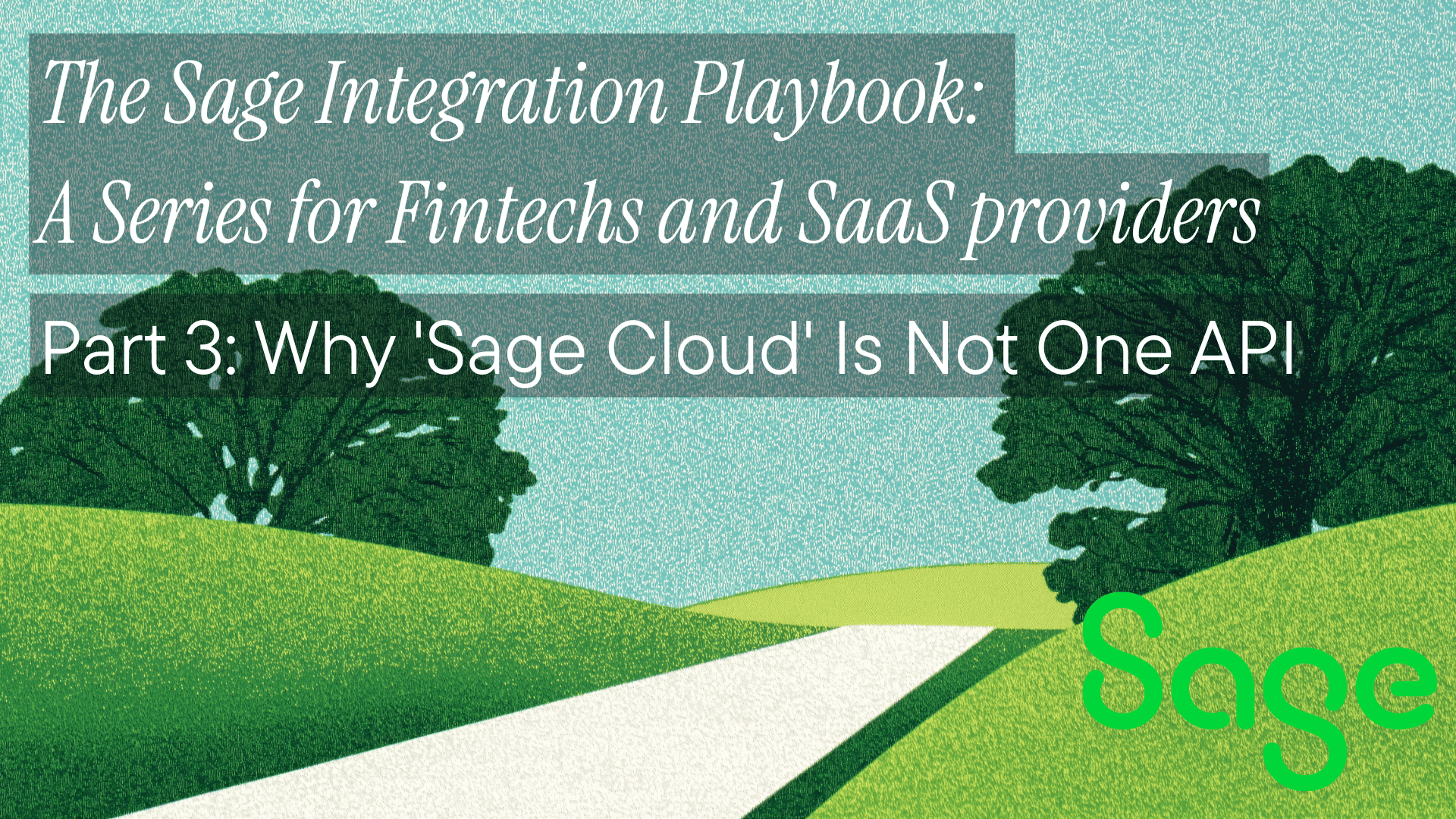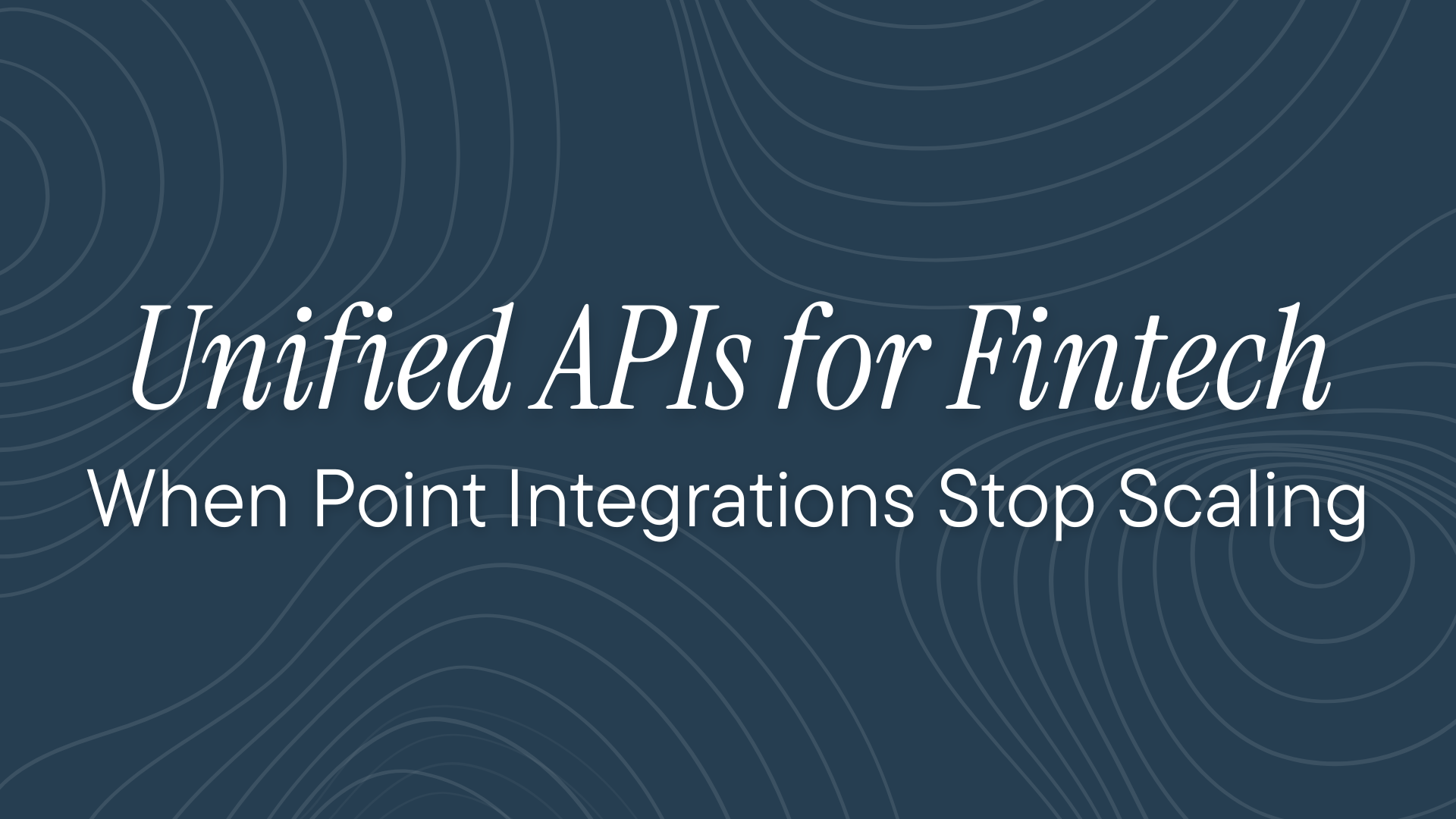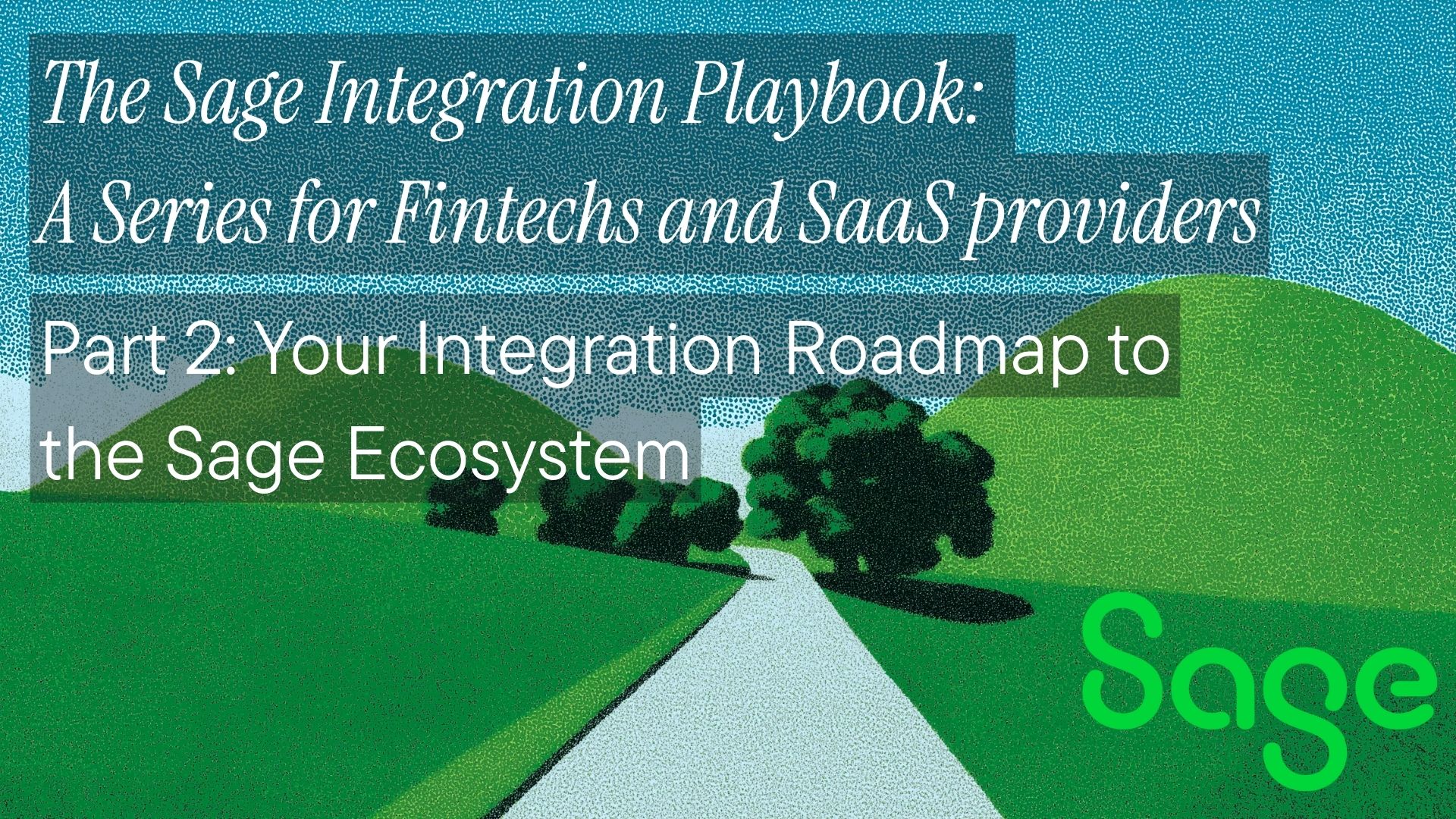— A “Lego brick” approach to building SaaS products. As kids, my brother and I enjoyed playing with Lego blocks. Using Lego, you can build almost anything that you can dream of. The satisfaction of building things is one of the main reasons; we started programming. I still remember my first projects in PHP and jQuery, provisioned on a local self-provisioned server. Those were the good old days.
Fast forward eight years and software development has changed a lot. Front-end frameworks and API driven back-ends have taken web development by storm. There are so many tools available... That is why we decided to centralize them in one directory called SaaS Blocks.
SaaS Blocks celebrates the modular way of building SaaS products. SaaS infrastructure building blocks are enabling makers with great ideas to get up and running faster than ever before; These tools allow you to save critical time building non-core features.
The unbundling of SaaS infrastructure
The unbundling of SaaS development has been going on for the past five years. Because of this, an increasing number of products are providing traditional SaaS features. A few years later, the success of SaaS has caused an abundance of feature as a service platforms. This trend brought us to our current point where we have tools to our availability in the following categories:
- 📊 Analytics
- 🛡Application Security
- 🔐 Authentication and identity
- ✍🏻 CMS & blogs
- 💬 Chat & Messaging APIs
- 📈Dashboards
- 💻 Developer portals
- 💳 Payments
- 🕵️♂️ Search
- And many more ...

Extend your SaaS product with superpowers 🦸🏼♀️
Build-vs-Buy
So—you're building a new SaaS product or adding features to an existing one. Do you build the software yourself, or buy something off the shelf? Building something in-house is always a temptation because as makers, we love building stuff.
Over the years, we developed and experimented with different stacks to finally set on the Serverless approach. We use this in combination with the best single-feature vendors to speed up our development and meet customer requests.
Questions to ask when making the dreaded buy-vs-build call
- Is this core to my business?
- Are existing solutions insufficient? What's the feature gap?
- Are existing solutions within budget range?
- What's the total cost of ownership to build this in-house?
How to use SaaS Blocks?
- Identify the features you want to support - we grouped them by category
- Research the vendors
- Assemble and augment your product with new functionality
- Delight your customers and unlock new deals
We enjoyed sharing our insights with you. Let us know your feedback!
UPDATE: we just launched on Product Hunt.
@gertjanwilde Woohoo! SaaS Blocks by Apideck was upvoted for the 100th time. 🙌 https://t.co/wSODlXLaDW
Add the badge to your site: https://t.co/pJdsOx3qBn pic.twitter.com/IksFeXMA9P
— Product Hunt Hi (@ProductHuntHi) June 27, 2019
We will be updating the SaaS Blocks directory weekly to help makers navigate the best building blocks for their products.
Build smarter and faster ✌️
- The Apideck Team
Ready to get started?
Scale your integration strategy and deliver the integrations your customers need in record time.








